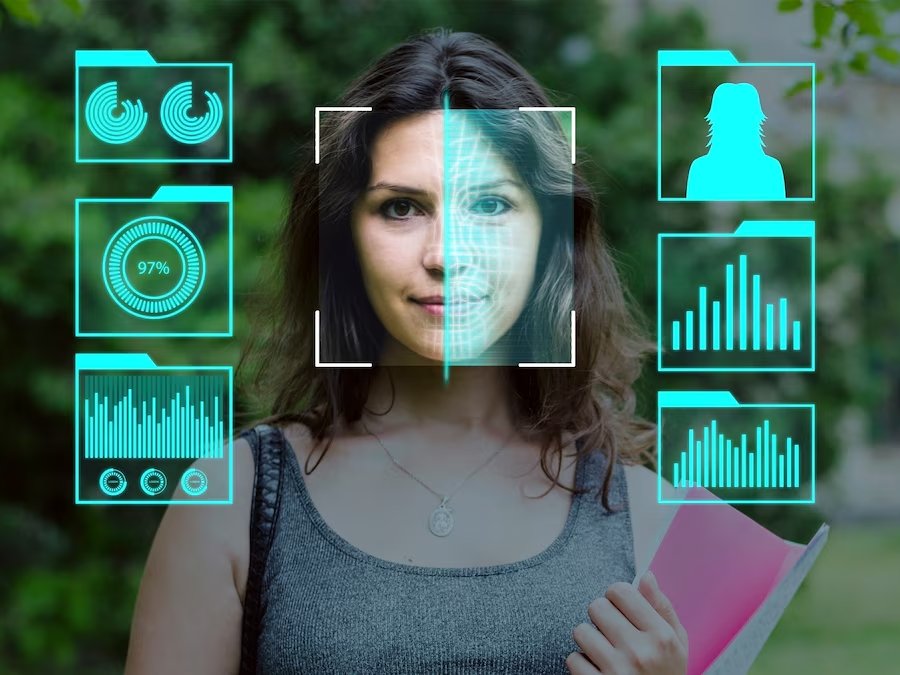In today’s digital landscape, where data breaches and cyber threats are becoming increasingly sophisticated, ensuring the security of online platforms has never been more critical. Traditional password-based authentication systems, once considered secure, are now often vulnerable to various cyberattacks.
As a result, the need for more advanced security measures has become apparent. One such advancement is the integration of biometrics into web design, which has revolutionized the way we approach online security. In this article, we will explore the role of biometrics in secure web design and how it is shaping the future of online security.
What is Biometrics?
Biometrics refers to the measurement and statistical analysis of people’s physical and behavioral characteristics. These characteristics include fingerprints, facial recognition, iris scans, voice recognition, and even behavioral traits like typing patterns. Unlike traditional passwords, which can be forgotten, stolen, or hacked, biometric data is unique to each individual, making it a more secure method of authentication.
Why Biometrics Matter in Web Design
As cyber threats evolve, so too must the methods we use to protect our data. Traditional security measures like passwords and PINs are no longer sufficient to protect sensitive information. Biometrics, on the other hand, offer a higher level of security by relying on the unique biological traits of individuals. This makes it significantly harder for unauthorized users to gain access to secure systems.
Incorporating biometrics into website development in Dubai is particularly important for businesses dealing with sensitive data, such as financial institutions, healthcare providers, and e-commerce platforms. By implementing biometric authentication, these businesses can ensure that only authorized users can access their systems, reducing the risk of data breaches and identity theft.
Types of Biometric Authentication in Web Design
Fingerprint Recognition
One of the most common forms of biometric authentication, fingerprint recognition involves scanning an individual’s fingerprint to grant access to a system. This method is widely used in smartphones and laptops and is increasingly being integrated into web design for secure login processes.
Facial Recognition
Facial recognition technology uses algorithms to analyze and compare facial features for authentication. This method is gaining popularity due to its ease of use and non-intrusive nature. Users can simply look at their device’s camera to gain access to a website or application.
Iris Scanning
Iris scanning is considered one of the most secure forms of biometric authentication. It involves analyzing the unique patterns in a person’s iris, which are almost impossible to replicate. While less common, iris scanning is often used in high-security environments.
Voice Recognition
Voice recognition technology analyzes a user’s voice patterns to authenticate their identity. This method is particularly useful in situations where hands-free access is required, such as virtual assistants and call centers.
Behavioral Biometrics
Unlike physical biometrics, behavioral biometrics analyze how a person interacts with a device, such as typing patterns, mouse movements, or touch gestures. This method adds a layer of security by continuously monitoring user behavior to detect anomalies.
Benefits of Biometrics in Web Design
- Upgraded Security: The primary benefit of biometric authentication is the enhanced security it provides. Since biometric data is unique to each individual, it is much harder for cybercriminals to replicate or steal, reducing the risk of unauthorized access.
- Convenience: Biometrics offers a convenient alternative to traditional passwords, which can be difficult to remember and manage. With biometric authentication, users can access their accounts quickly and easily, without the need to remember complex passwords.
- User Experience: Integrating biometrics into web design can improve the overall user experience by providing a seamless and frictionless login process. This can lead to higher user satisfaction and increased engagement with the website or application.
- Multi-Factor Authentication: Biometrics can be used in conjunction with other authentication methods, such as passwords or security tokens, to create a multi-factor authentication system. This adds an extra layer of security, making it even more difficult for unauthorized users to gain access.
Challenges of Implementing Biometrics in Web Design
While the benefits of biometric authentication are clear, there are also challenges associated with its implementation. One of the main challenges is the cost of integrating biometric systems into existing web design frameworks. Biometric hardware and software can be expensive, and the process of implementing and maintaining these systems can be complex.
Another challenge is the issue of privacy. While biometric data is secure, it is also sensitive information that must be handled with care. Businesses must ensure that they comply with data protection regulations and implement robust security measures to protect users’ biometric data.
Finally, there is the challenge of user acceptance. Not all users are comfortable with the idea of using biometric data for authentication, particularly those who are concerned about privacy. Businesses must work to educate users about the benefits of biometric authentication and address any concerns they may have.
The Future of Biometrics in Web Design
As the digital landscape continues to evolve, the role of biometrics in web design is likely to become even more significant. Advances in technology will make biometric authentication more accessible and affordable, leading to wider adoption across various industries. Additionally, as cyber threats become more sophisticated, the need for advanced security measures like biometrics will only increase.
For businesses involved in website development in Dubai, the integration of biometrics into web design will be crucial in maintaining the highest levels of security. By staying ahead of the curve and adopting biometric authentication, these businesses can protect their users’ data and build trust with their customers.
Conclusion
Biometrics is playing an increasingly important role in secure web design, offering a more reliable and convenient method of authentication than traditional passwords. By focusing on unique biological traits, biometric authentication significantly reduces the risk of unauthorized access and enhances the overall user experience.
For those interested in staying ahead in the digital world, particularly in website development in Dubai, the incorporation of biometric authentication is a step towards a more secure and user-friendly future. By choosing a forward-thinking web design agency like RedSpider Web & Art Design, businesses can ensure they are well-equipped to meet the evolving demands of online security.




